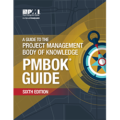
Resource gaps are like a small wrench on a train track, unnoticed but poised to derail even the biggest projects with little warning.
While project managers are focused on the “big two,” (budget and schedule), with a smaller focus on other secondary items like stakeholder management, risks, and so forth, resource gaps lurk in the shadows and tend to become budget killers at the speed of a maglev.
What do I mean by resource gaps?
Your project’s gantt chart contains neat lines that tell you what each task’s start and end date is. But every task requires resources: People, equipment, tools, and machinery. Non-tangibles like insurance coverage and safety programs also fit the bill. It is surprisingly easy to plan your project without considering whether the resources are available or not, or have the availability of a resource change mid-project without realizing it.
As a project manager, spotting these gaps before they spiral into disaster is your superpower. It’s the standout item that separates the good from the best. So let’s dive into how to master resource leveling during planning and keep a hawk-eye on availability during project control, all while keeping your train on the track.
During Project Planning
The project manager is like the engineer, the mastermind orchestrating a flawless plan to keep everything on schedule. One misstep, one overlooked detail, and the whole operation could be considered a failure. Resource gaps—those sneaky moments when your team, budget, or tools are stretched thinner than a bridge over a canyon—are the silent alarms that can derail even the best-laid plans. Your project plan is the choreographed script, and every crew member needs to be in the right place at the right time.
The oft-overlooked silent killer during the planning stage is called resource leveling. Complicated word, right? Allow me to lift the veil, because if you are not intricately familiar with gantt charts you will probably be amazed at how such a little detail can be so easily missed.
Let’s say you have a project which involves digging a hole. You need a laborer to do that, like this:
Easy so far, right?
But what if you need to dig two identical holes:
If you wanted to dig the two identical holes at the same time, you would need two laborers, not one. You’d need to hire another person, or subcontract it out.
Of course, you would dig one after the other to avoid the expense, like this:
But let’s look closely at what just happened here. You are smoothening or “leveling” the resource usage rate at the expense of time.
You either pay for the extra resources or you spend the time, but not both.
Now, I realize this is pretty basic, but resource overbooking happens in projects all the time. More realistically, the digging of the hole requires more than a laborer: Equipment (excavator), survey crews, measurement devices, safety fencing, and many more. These resources get double and triple booked with surprising ease.
Moreover, the process of developing a gantt chart completely ignores the reality of resource availability. It considers only the time required for each task and the dependencies between them. Resource leveling needs to be considered as the caboose of the train, the critical member that’s so easily forgotten about but that you can’t live without.
How to Perform Resource Leveling
Resource leveling involves inputting the resources required for each task into that task’s metadata. Regardless of which project management software you’re using, it should be as simple as looking up the task properties and entering the resources there into a resource schedule.
Then the software can usually print a resource usage report telling you how many of each equipment, tool, or people you need at any given time. For large projects, a resource profile can tell you, for example, how many excavators are required at any given time. If the line goes higher than the available number of excavators, it needs to be flattened (leveled!) or budget added to account for the use of a subcontractor.
But generally speaking, most of the time you know what your critical resources are. You can, and should, manually inspect them regularly to make sure there are no hiccups in their availability.
During Project Execution
 During the project execution phase, a process called project control takes over. Essentially, that means having regularly scheduled control points at which time the project’s budget and schedule status are reviewed and reported to stakeholders.
During the project execution phase, a process called project control takes over. Essentially, that means having regularly scheduled control points at which time the project’s budget and schedule status are reviewed and reported to stakeholders.
But to be complete, the status reports should include a basic analysis of future project resources and any changes to their availability. Essentially, their likelihood to trip up the project.
Hence, project status reports which normally contain in-depth analysis of budget and schedule status should also include a concise analysis of future resource availability. This involves forecasting whether planned resources will remain accessible based on current trends, external factors, or competing demands. For example, a report might highlight a potential shortage of skilled labor due to market demand or warn of budget constraints if costs trend higher than anticipated.
By proactively identifying risks to resource availability, project managers can implement mitigation strategies, such as securing backup suppliers or reallocating funds. This forward-looking approach ensures alignment with project objectives, enhances stakeholder confidence, and supports informed decision-making, ultimately safeguarding the project’s trajectory toward successful completion within scope, time, and budget constraints.
But let’s talk about the human element, because even the best planned route needs a motivated crew. Overutilized team members don’t just slow down; they disengage, make mistakes, or quit. A 2025 Gallup study found that 67% of employees on overbooked teams reported higher stress and lower job satisfaction.
During status updates, create a safe space for your team to speak up about workload concerns. Maybe your data analyst is juggling too many reports, or your contractor is double-booked across clients. Listening to these signals lets you adjust before morale tanks. Think of it as keeping your crew sharp and loyal—no one wants a mutiny mid-project.
How to Deal With Resource Gaps When They Happen
 Finally, what happens when you spot a gap mid-project?
Finally, what happens when you spot a gap mid-project?
Maybe your star coder is out for two weeks, or your budget for freelance support just got slashed. This is where your project management instincts kick into overdrive.
First, reassess priorities—can lower-priority tasks slide? Next, look for cross-training opportunities; maybe your QA engineer can pinch-hit on basic coding tasks. If the gap is too big, consider external resources, but don’t just throw bodies at the problem. A rushed hire can be like adding an untrained rookie to your crew—more liability than help. Instead, lean on your network for trusted contractors or reallocate internal talent. The key is acting fast before the gap snowballs.
More specifically, there are two ways to deal with resource gaps:
- Crashing involves allocating more resources to a task.
- Fast tracking involves performing tasks in parallel that were originally planned in sequence.
Technology is your trusty sidekick in this high-stakes game. Resource management software isn’t just a nice-to-have; it’s your mission control. Platforms like Monday.com or ClickUp let you track workloads in real time, sending alerts when someone’s utilization creeps into the red zone. Pair this with regular team check-ins to get the human perspective—software won’t tell you if your developer is quietly burning out.
And don’t forget about non-human resources. If your project relies on specialized equipment or software licenses, track their availability as religiously as you track your team’s. Running out of server capacity mid-sprint is like realizing your gas gauge is low—avoidable with a little foresight.
Conclusion
As you approach the project’s final deliverables, resource gaps can feel like a plot twist you didn’t see coming. When that happens, regular status updates are your early warning system. By reviewing availability weekly, you can shift resources like a master strategist moving chess pieces. Maybe you delay a non-critical feature to free up your UX designer for a critical deadline. Or you negotiate with stakeholders to extend a milestone, buying your team breathing room. These moves aren’t signs of weakness; they’re proof you’re in control, adapting to keep the train rolling and on the track.
In the end, spotting resource gaps is about staying one step ahead of the curve. Resource leveling during planning sets the stage, regular checks during project control keep you agile, and dealing with resource gaps immediately keeps the operation moving with confidence.
By making resource availability a cornerstone of your status updates, you’re not just managing a project—you’re rolling the train into the station.














Leave a Reply